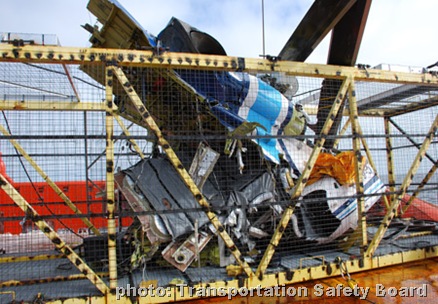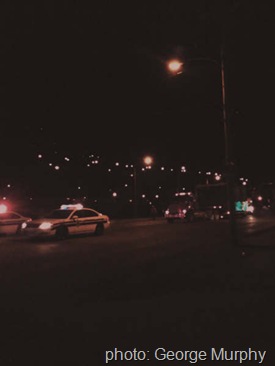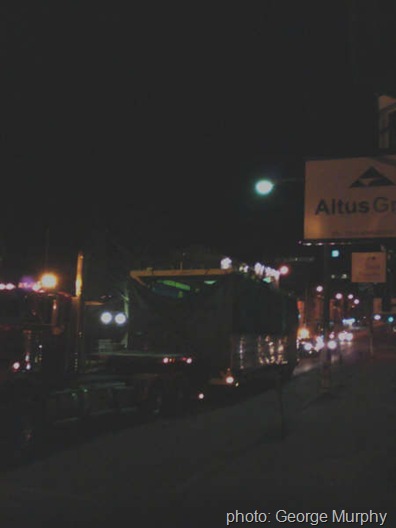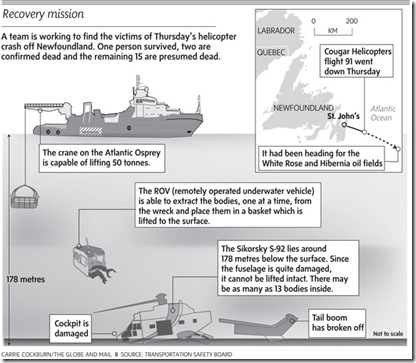Not surprisingly, an e-mail showed up on Thursday ranting about what the writer – a former journalist – called “asshole questions.”
It wasn’t surprising because more than a few people have been appalled since Thursday last week at an entire line of innuendo drawn by one reporter at a news conference on the Cougar helicopter crash and then turned into a self-referential pile of garbage that evening on a VOCM call-in show.
Self-referential refers to the arrogant tendency of both the reporter and the call-in show host to talk about how hard this whole tragedy at sea has been for them. They didn’t lose anyone on the ill-fated Cougar helicopter flight nor did they know anyone personally, apparently. Their grief came from having to cover the story. The pair led off the Sunday evening edition with the same self-pity bull.
Then they turned to justifying their comments about search and rescue and what they seem to believe was the lack of search and rescue response “on Newfoundland ground.” That’s the phrase the reporter in question likes to use. He used it, too, in that news conference not to establish the search and rescue response but to focus on the military search and rescue.
All that blather – as well as the call right afterwards from one of their former colleagues at the twice defunct newspaper The Independent - was a clue that the pair have been under some pressure likely from their colleagues in the local journalist community for a string of not only what the e-mail correspondent aptly described but the commentary that flowed from the questions.
The details of this incident were known on the day of the crash. One of the details known from the outset is that a search and rescue helicopter was available at the time of the crash and responded to the scene. According to the timeline produced in the Telegram from the rescue co-ordination centre in Halifax, the helicopter arrived on scene 72 minutes after the ditching and recovered the one survivor in the water.
One must wonder on what basis anyone would morph the simple facts as established clearly and unequivocally into some sort of line of inquiry about the CH-149s.
The only obvious reason to do so would be if there was any indication that this had an impact on events, but that doesn’t hold up to any scrutiny. With the information presented at the third news conference on the day of the crash – the one at which the string of questions on the Cormorants started – it was pretty clear that none but the two bodies (one fatality and one survivor) identified were spotted by the very first aircraft on scene. That PAL King Air arrived some 25 minutes after impact, more than 40 minutes before the first search and rescue helicopter - from COUGAR search and rescue (SAR) - arrived on the scene.
With that established – as it was from the outset - there is no legitimate reason to persist in the blatant misrepresentations that have taken place since Thursday.
Search and rescue aircraft were available immediately at the time of the crash. The others – Cormorants belonging not to coast guard but to the Department of National Defence – were on a training exercise. They were pulled off the exercise and despatched to the crash site. They arrived on the scene 18 minutes after the COUGAR SAR flight. [Corrected: original stated difference in time as 38 mins. Cougar on scene 1110 hrs. Cormorant on scene 1128 hrs local]
This entire thread cannot be blithely dismissed as part of the normal hard work done by responsible journalists. Responsible journalists did their jobs on Thursday and they have done it since then on this story. They asked hard questions but they asked relevant questions based on the information readily available. They didn’t get into the Cormorant angle, one suspects, because the unspeakable truth of this incident was evident to them all from the outset.
Responsible journalists didn’t use the questions and answers to create an entirely false impression, as it evidently has, in a group of people who have been misled in their grief. One of those people, the mayor of a town hit hard by the tragedy, turned up on national radio repeating the false information he had received and trusted.
Even as hideous as all that is, the self-referential pair can’t be held responsible for another despicable crowd who have taken the false information – no search and rescue helicopters in Newfoundland at the time of the crash – and put it to some more demented purpose. Far too many people have taken this false information and turned it into part of their political agenda. One of those callers turned up just now on the same call-in show spewing his particular brand of venom. Not once did the host try and sort the fellow out.
People who know how news conferences work know how information can change in an unfolding event such as this one. They can note, for example, how some details change. In the second newser, some locator beacons were detected initially. In the third one, it sounds like none at all were detected. The correct detail will emerge.
That’s not what we are looking at in the case of the thread about SAR response. The details were already clear from the outset. Some people have misrepresented them, inexplicably and disgustingly.
This sort of misrepresentation amounts to an abuse.
It tortures the families of the victims of the crash by suggesting a hope which is false.
This attack – and that’s what it amounts to – tortures the men and women of the search and rescue services. 103 Search and Rescue Squadron flies twice the national average in SAR missions. Hercules from 413 Squadron join them far out to sea. They all train hard and fly hard and risk their lives in weather when the rest of us are huddled by a fire safe at home. They do it to save the souls whose lives are at risk in the harsh North Atlantic. When lives are lost, as in this case, they will inevitably search their souls to ensure that all that could be done was done.
This attack abuses the men and women of Cougar. The company has an exemplary safety record. The company has such a record because every single employee is committed to safe service. Over 48,000 accident free flying hours don’t happen without such a level of personal commitment. The company’s crews also fly search and rescue services every bit as good and every bit as dangerous as the work done by 103 and its sister squadrons.
These misrepresentations abuse the members of the public who are shocked by the tragedy and who share in the grief of those who have lost loved ones. They are misled into believing things which are not true.
In a time of tragedy, it is hard to imagine more monstrous abuses. The tortures will continue until someone decides to put an end to them. Maybe a wise editorial hand needs to rest on someone’s shoulder.
In the meantime, all that the rest of us can do is hope that somewhere in the midst of their self-absorption, the perpetrators of the abuse can realize the harm they are doing.
-srbp-



